TOHOKU WEEK | Day 3 | Iwate
-
- About Iwate
- Recent Developments
- Watami Organic Land – Japan’s largest organic farming “theme park”
- Rugby World Cup
- Local Voices – The People Behind the Tourist Spots
- Industry and Investing in Iwate
- Iwate’s Arts and Crafts
- Local Business Directory
- Delve deeper into Iwate…
- Coming Up
About Iwate
Iwate Prefecture (岩手県, Iwate-ken) is a prefecture of Japan located in the Tōhoku region of Honshu. It is the second-largest Japanese prefecture at 15,275 square kilometres and has the lowest population density of any prefecture outside Hokkaido.
Iwate shares the highest peaks of the Ōu Mountains – the longest mountain range in Japan – and 5% of its total land area is designated as National Parks. It is home to famous attractions such as Morioka Castle, the Buddhist temples of Hiraizumi, the Fujiwara no Sato movie lot and theme park in Ōshū, and the Tenshochi park in Kitakami known for its huge, ancient cherry trees.
Recent Developments
In the years since the triple disasters of March 11 2011, Iwate prefecture has seen a massive effort to rebuild livelihoods, local industries and develop a strong infrastructure to keep residents safe from future disasters.
Governor of Iwate, Takuya Tasso writes, “As a disaster-affected prefecture, we can contribute to the improvement of disaster risk reduction both in Japan and the entire world. We will pass along the truth and lessons learned from our experience during the Great East Japan Earthquake and Tsunami. We will showcase to the world the state of Sanriku, a cutting edge area in recovery with the initiatives in reconstruction, disaster mitigation, and risk reduction measures we have taken. Thank you for your continued understanding and cooperation”.
A record of reconstruction activities from 2011-2019 can be found HERE.
The Iwate Prefecture Citizen’s Plan featuring “11 groundbreaking
projects to lead a new era” including plans for a low-carbon future and educational reform supported by technology can be found HERE.
City Hall
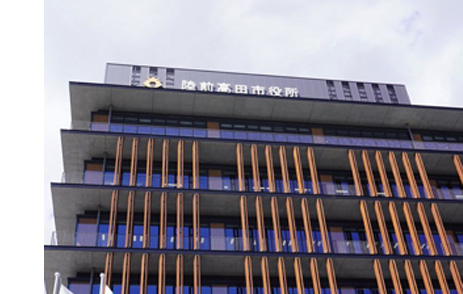 We are really pleased to see that earlier this year Rikuzentakata on the Southern coast of Iwate opened the doors to its new city hall, signalling a new chapter of reconstruction for the town since the disasters in 3/11. The previous building was destroyed in the tsunami and for the past decade the city’s functions have been carried out from a prefabricated building in the mountains. After ten years, the new 7-floor building which overlooks the ocean from the hills is now open. Congratulations to all involved in this landmark project.
We are really pleased to see that earlier this year Rikuzentakata on the Southern coast of Iwate opened the doors to its new city hall, signalling a new chapter of reconstruction for the town since the disasters in 3/11. The previous building was destroyed in the tsunami and for the past decade the city’s functions have been carried out from a prefabricated building in the mountains. After ten years, the new 7-floor building which overlooks the ocean from the hills is now open. Congratulations to all involved in this landmark project.
Watami Organic Land – Japan’s largest organic farming “theme park”
Another new feature on Iwate’s Rikuzentakata landscape is Watami Organic land which opened its doors as Japan’s “largest organic theme park” on April 29 2021. Here, visitors can learn about organic farming via hands-on experiences. The goal is to use 23 hectares of space to host fields, workshops, shops, restaurants, and a music space – all in the pursuit of teaching visitors about organic farming and sustainable societies. The main attraction is a huge outdoor BBQ area where visitors can even pick their own vegetables from the garden. WOL will gradually expand its facilities over the next 20 years, aiming for reconstruction of the affected areas and regional revitalization.
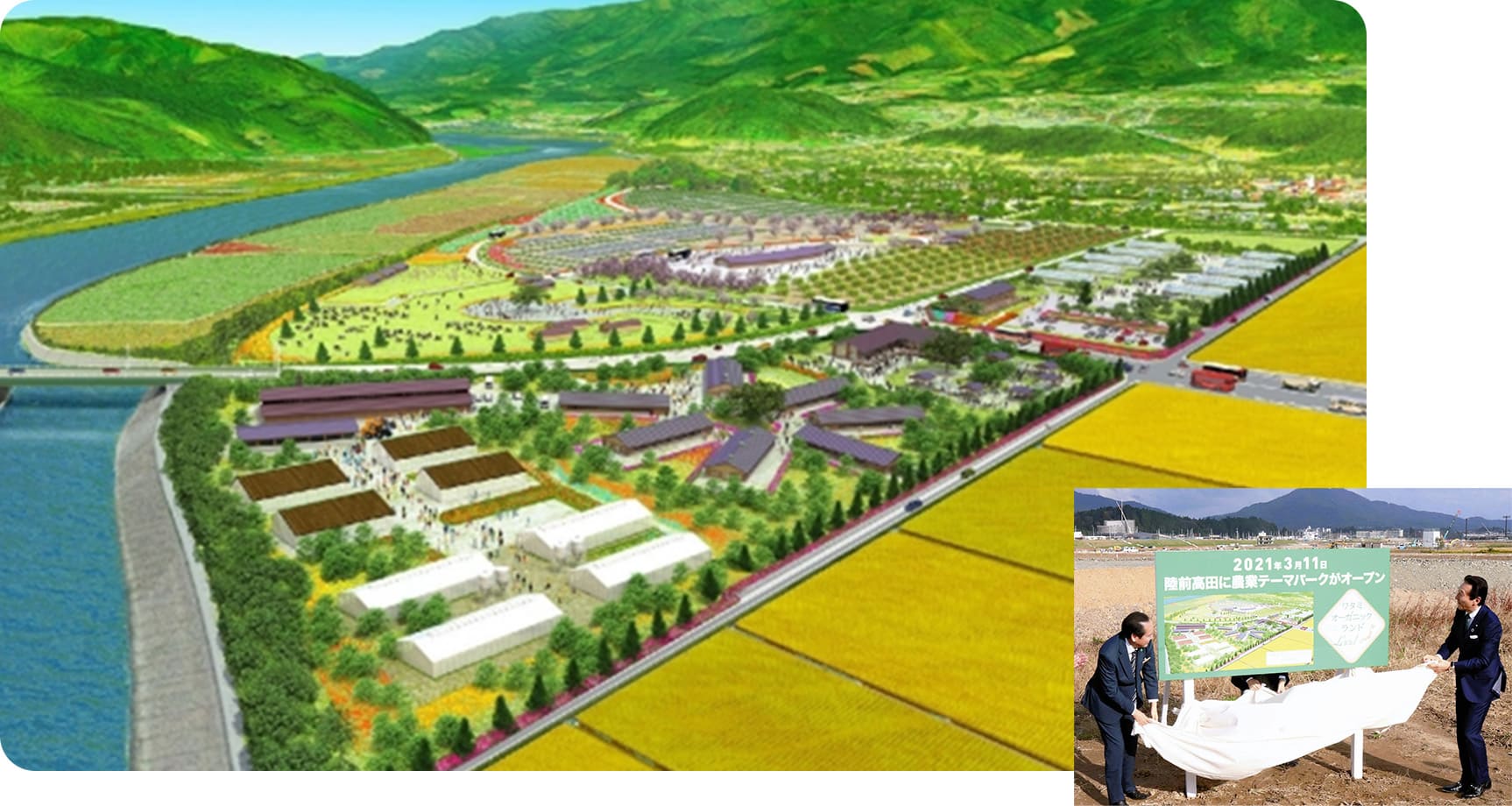
The creator of the park and CEO of the Watami group, Mr. Miki Watanabe, says their “dream is for all of the world to someday come together as one to erase sadness and increase happiness, and that Organic Land will be a place for people to create fun memories.”
Visit Watami Organic Land’s Instagram.
@watami.organic
Rugby World Cup
Thanks to its home team’s seven consecutive national championship titles (1979-1985) the coastal city of Kamaishi is known as a rugby town. In 2011, when much of the city was wiped out by the tsunami on March 11 2011, Kamaishi turned to rugby as a driving force for recovery and reconstruction.

Despite the devastation wreaked, residents rallied together behind Kamaishi’s winning bid to become one of Japan’s 12 cities to host the Rugby World Cup in 2019. Reconstruction of the city ran alongside the construction of the new stadium, which was opened in 2018 on the former site of Kamaishi East Junior High School and Unosumai Elementary School. The site is significant for its connection to the ‘Miracle of Kamaishi’, the successful evacuation of all children attending school on the day of the disaster.
The Rugby World Cup and the new Kamaishi Unosumai Recovery Memorial Stadium was widely felt to boost collective morale and give residents the impetus to work towards a more sustainable city that is open and welcoming to domestic and international visitors.
A representative from the Kamaishi City Culture and Sport Department at Kamaishi, Iwate Prefectural Office says: “As one of the host cities of the Rugby World Cup 2019™ Japan Tournament, a key aim for Kamaishi City was to accelerate the recovery from the Great East Japan Earthquake, and at the same time convey our gratitude to the rest of the world for its support in the reconstruction efforts since 2011. We are very pleased to say that we were able to achieve both of these goals.
We will continue to foster the legacy of RWC2019 to further progress the development of Kamaishi City. Our residents, from children to elderly, will be forever grateful for the kind support our city has received from all over the world, and it is this support that gives us the hope and courage to continue to live up to our name as ‘Rugby Town’ of Japan.”
Local Voices – The People Behind the Tourist Spots
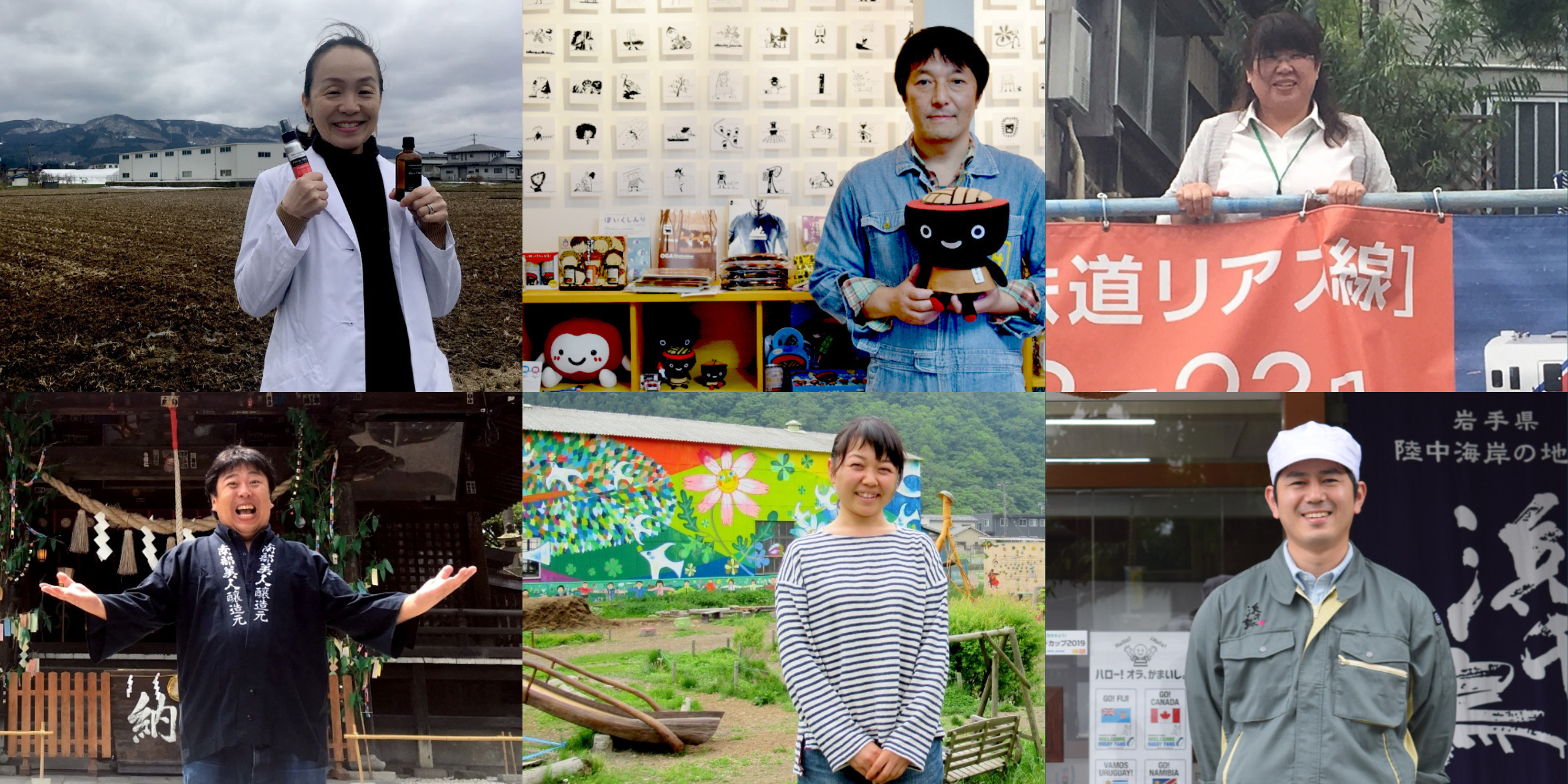
Iwate is abundant in resources and has a rich history and culture, but its greatest asset is its people. The people of Iwate are humble and hard-working, stoic and tenacious. Most of all, they are some of the most hospitable and friendly people in Japan.
Iwate’s International Affairs Office has set up a blog to showcase the lives and stories of people living in Iwate with the goal of encouraging visitors to the area. From residents who have found peace and purpose moving to the area, to those who are on a mission to rebuild the prefecture through innovation, grit and a will to see the area thrive, you can hear local stories of what Iwate means to some of its people below.
Aki Sugiyama of Iwaizumi Town
Sugiyama-san currently works for the Iwaizumi Tourism Association located at Ryusendo Cave, a limestone cavern home to the clearest underground lakes in Japan.
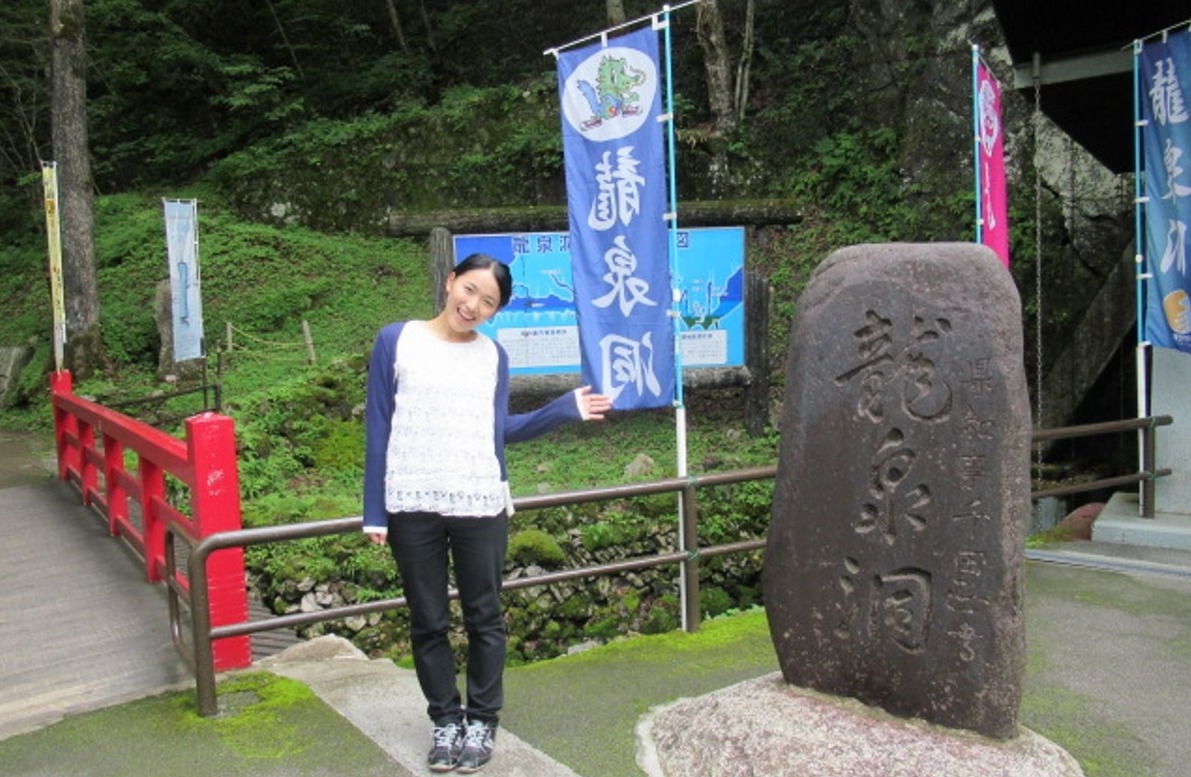
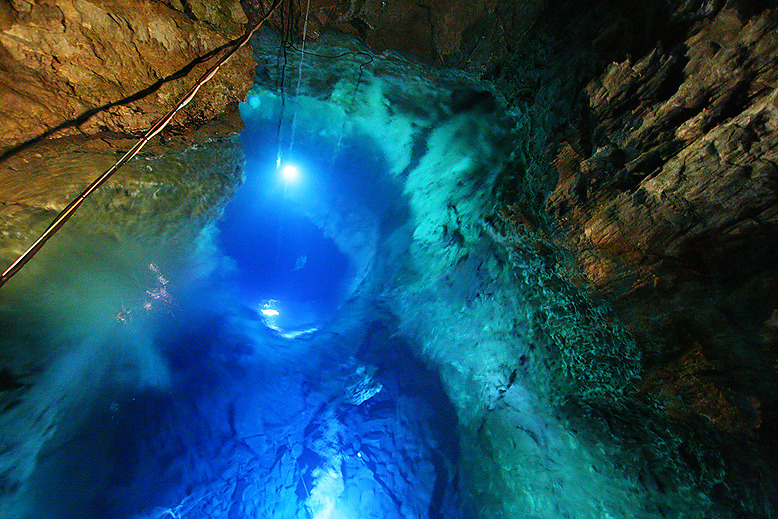 “I wasn’t really interested in caves until I came to Ryusendo, and now they call me ‘Cave Girl.’ Ryusendo is great, but I also really like Akkado Cave, which is nearby. It’s the longest cave in Japan. I haven’t been through the whole thing, so I’m not completely sure, but there’s supposed to be really tight squeezes through the cave. Just like Ryusendo, only a portion of the cave is open to the public, but it goes on further underground. What’s so interesting to me about caves is that you can’t see in front of you. It’s like anything could be possible.”
“I wasn’t really interested in caves until I came to Ryusendo, and now they call me ‘Cave Girl.’ Ryusendo is great, but I also really like Akkado Cave, which is nearby. It’s the longest cave in Japan. I haven’t been through the whole thing, so I’m not completely sure, but there’s supposed to be really tight squeezes through the cave. Just like Ryusendo, only a portion of the cave is open to the public, but it goes on further underground. What’s so interesting to me about caves is that you can’t see in front of you. It’s like anything could be possible.”
An underground lake in Ryusendo (Photo: Iwate Tourism Association)
Ryusendo Cave
Shusei Yamada of Kamaishi City
Yamada-san is a photojournalist who once drove a biodiesel-fueled car around the entire world, collecting used cooking oil from kind strangers. Now he teaches the people of Kamaishi about renewable energy and a life in harmony with nature. He holds workshops at an off-grid eco-house nestled in the mountains of the Hashino area of Kamaishi, and tries to lead a more sustainable lifestyle.
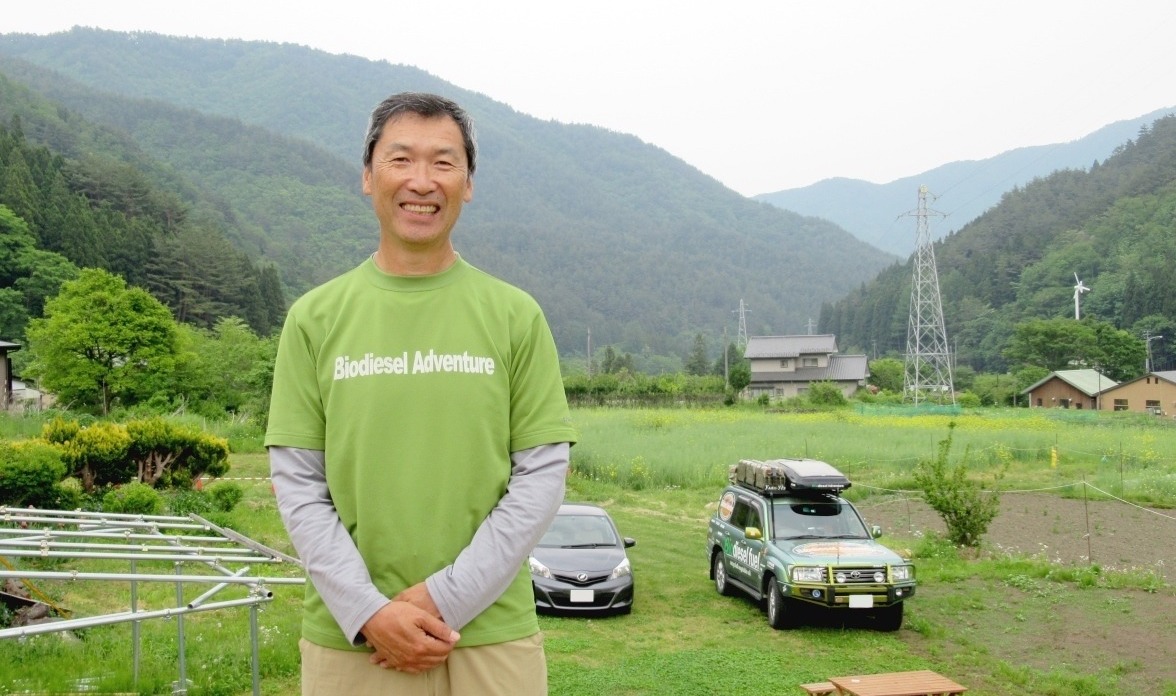
“When I was younger, I traveled around the world on a motorcycle. I was abroad for 30 years, and over that time I saw how much it changed. If we continue the way we’re going, the Earth is not going to last. Last year we held about 10 workshops here at the eco-house. The most important one to me is the ‘Millenium Workshop.’ We get a group of people from different backgrounds to talk about how this region should develop over the next 1,000 years”.
Yamada-san’s BLOG
Akiko Iwasaki of Kamaishi City
Iwasaki-san runs the famed Horaikan, a Japanese-style inn close to the ocean in Kamaishi. She has hosted many volunteer groups over the years, and also runs an organization called Nebama Mind that aims to revitalize the area.

“While I want to move on, I also think it’s important for me to never forget the 3/11 disaster. We’ve hosted a lot of volunteers, but we see less people these days. It’s only natural that memories of the disaster will fade. However, that’s why I think we need to educate people on what to do during a disaster.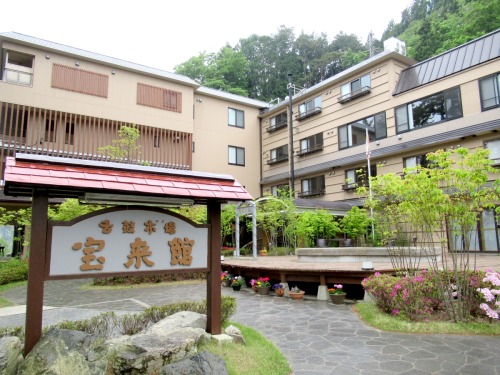
For example, a group from the U.K. came by to volunteer, and they asked me why the Japanese people say to save yourself during a tsunami. The U.K. is an island country just like Japan, but they told me their culture as an island country is to face the ocean and save people. That’s why they have had a Coastguard for more than 150 years, and that’s why they came all the way here. You could say we have the same DNA here in Kamaishi, but we believe that the only way to survive a tsunami is to run away. Save yourself, and don’t rely on others. That’s how we were raised. The U.K. rescuers seemed to understand that, and in the end, we realized that the ocean teaches the same lessons no matter where you are.”
Shoko Mino, Ofunato City
Mino-san is a guide at the Iwate Tsunami Memorial Museum which opened on September 22 2019, and is dedicated to the memory of the victims of the 2011 Great East Japan Earthquake and Tsunami.
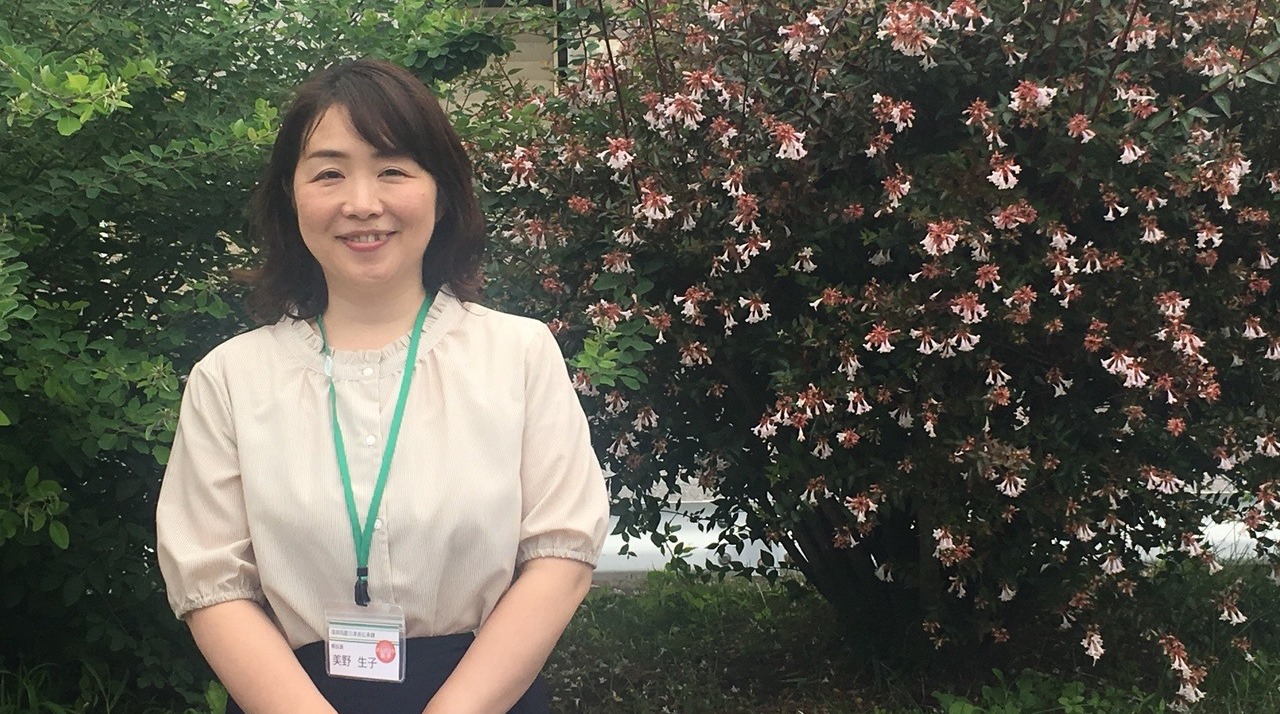
“I’m from Tokyo originally, but my husband is from Iwate so we moved up here when we got married almost twenty years ago. I work as a public health nurse, and I was set to start as a public health nurse for Ofunato City in the April immediately after the disaster. Obviously, for a long while, I wasn’t able to work as a nurse, as I was helping to sort through all the aid packages we got from around the world, and get to the people who needed it in the shelters. A few years later, I got a job in Rikuzentakata at the Children Raising Support Center, which had received donations of picture books and toys from around the world. The kids and their parents really loved those donations. It gave me hope and energy. As a guide, I hope I can serve a role in thanking people for all the support they gave.”
Iwate Tsunami Memorial Museum
Facebook
Twitter
Instagram
Industry and Investing in Iwate
90% of Iwate is agricultural land and forests. It has a cool climate, dense forests, and a long coastline, and its economy relies on agriculture, forestry, and fisheries to this day. Modern industries in Iwate have a focus on the development of manufacturing bases for global market expansion, the development of medical devices, and supporting the adoption of the fourth industrial revolution technologies, such as IoT and AI.
Over the years, Iwate has attracted many businesses which have set up satellite branches for the whole Tohoku region. If a company starts its operation with an investment of 100 million yen or more in total within three years from deciding to establish a base in Iwate Prefecture, it is eligible to receive a loan for land acquisition, land development, and acquisition of plants and equipment, under the terms specified by the designated financial institutions:
- Up to 10 years (including a maximum of a 3-year grace period), 1.8% or less per annum
- Up to 15 years (including a maximum of a 3-year grace period), 2.0% or less per annum
Loan amount - Up to 300 million yen within 80% of the amount invested per factory (500 million for factories in the base industrial park, 1 billion yen with special approval by the governor, 2 billion yen in designated areas)
CLICK HERE FOR AN IN-DEPTH BREAKDOWN OF INDUSTRIES IN IWATE
Iwate’s Arts and Crafts
BCCJ members and Iwate residents, Hironori Katagiri and Kate Thomson have been using arts and crafts to bring together communities and reflect on the lives of those affected by the Great East Japan earthquake. Earlier this year on March 11, in collaboration with PHOTOHOKU they held an exhibition in the Kyu-Ishii Kenreitei building, highlighting the importance of family and community, and living in harmony with our environment. This exhibition showed how artists from across Tohoku, Japan and the world responded to offer tangible, tactile messages of support and encouragement to the people of Tohoku.
“Talking to visitors was humbling, inspiring and extremely emotional…several of them cried in the exhibition, and then realised they had not been able to do so before and were grateful for the chance to release some of the bottled emotion.”

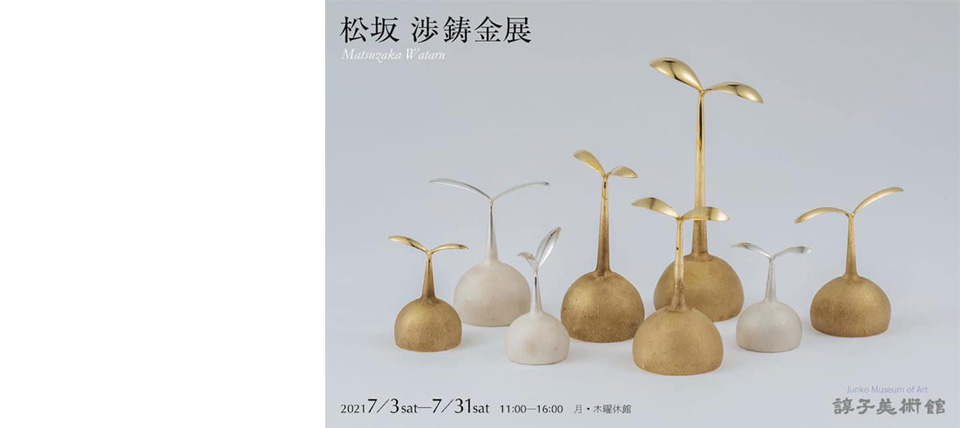
Iwate is also home to many young local craftspeople, such as Mutsusaka Wataru, who is currently exhibiting his work in Kitakami from July 3 – 31.
You can view Wataru-san’s works on Instagram here, and details of the exhibition can be found on his Facebook page here.
Local Business Directory
With thanks to suggestions from BCCJ members, we’ve put together a list of local favourites in Iwate Prefecture. Once COVID-19 restrictions are lifted, we hope you have the chance to visit some of these spots in person.
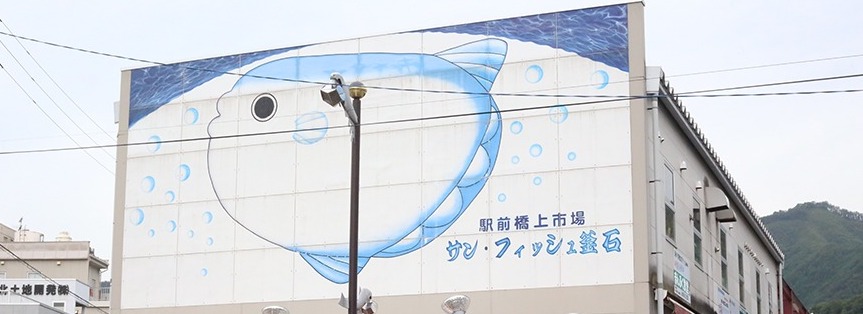
- Sankichi – located in Rikuzentakata, Iwate – a fantastic izakaya with fabulous food and a cool interior.
- Kuzumaki Kogen Ranch – visitors can get in touch with nature and try their hand at a variety of offers fun experiences, such as looking after calves and sheep, cultivating shiitake mushrooms, and making ice cream.
- Shibata – also located in Rikuzentakata, Iwate – another super izakaya with stellar food.
- Hamachidori Sake – a local sake brewery in Kamaishi, Iwate, with a variety of sake which can ordered to your doorstep. Check our their YouTube channel, too, to find out more about Hamachidori.
- Izakaya Sai – Morioka – recommended is the Sai Dashimaki Eggroll”, made with special local eggs and bonito dashi stock.
- Tono Furosato Village – recreates the scenes of an old farming village, with seven nanbu magariya houses that were built in the area from the Edo Period to the Meiji Period
- Ekimae Kyojo Ichiba Sunfish Kamaishi – A new market set up next to Kamaishi Station.
- Fujiyu – another way to support Kamaishi, Iwate locally – order local soy sauce, miso, ama-zake and more to your doorstep.
- Tono Brewing – opened in May 2018, the TAPROOM of the Tono Brewing Company is a place where you can enjoy craft beer made with Tono hops.
- Fermenstation – cosmetics and various products brand emerging from the unused fields of Oshu.
- Kamariba Restaurant – opened in 2017 in the aim of reviving the drinking and dining district devastated by the Great East Japan Earthquake Disaster
- Kojima Seikai – order your favourite local confectionaries online, or visit the shop in person in Kamaishi, Iwate.
Delve deeper into Iwate…
- Visit Iwate
- Iwate no tabi (Japanese only)
- JNTO Iwate
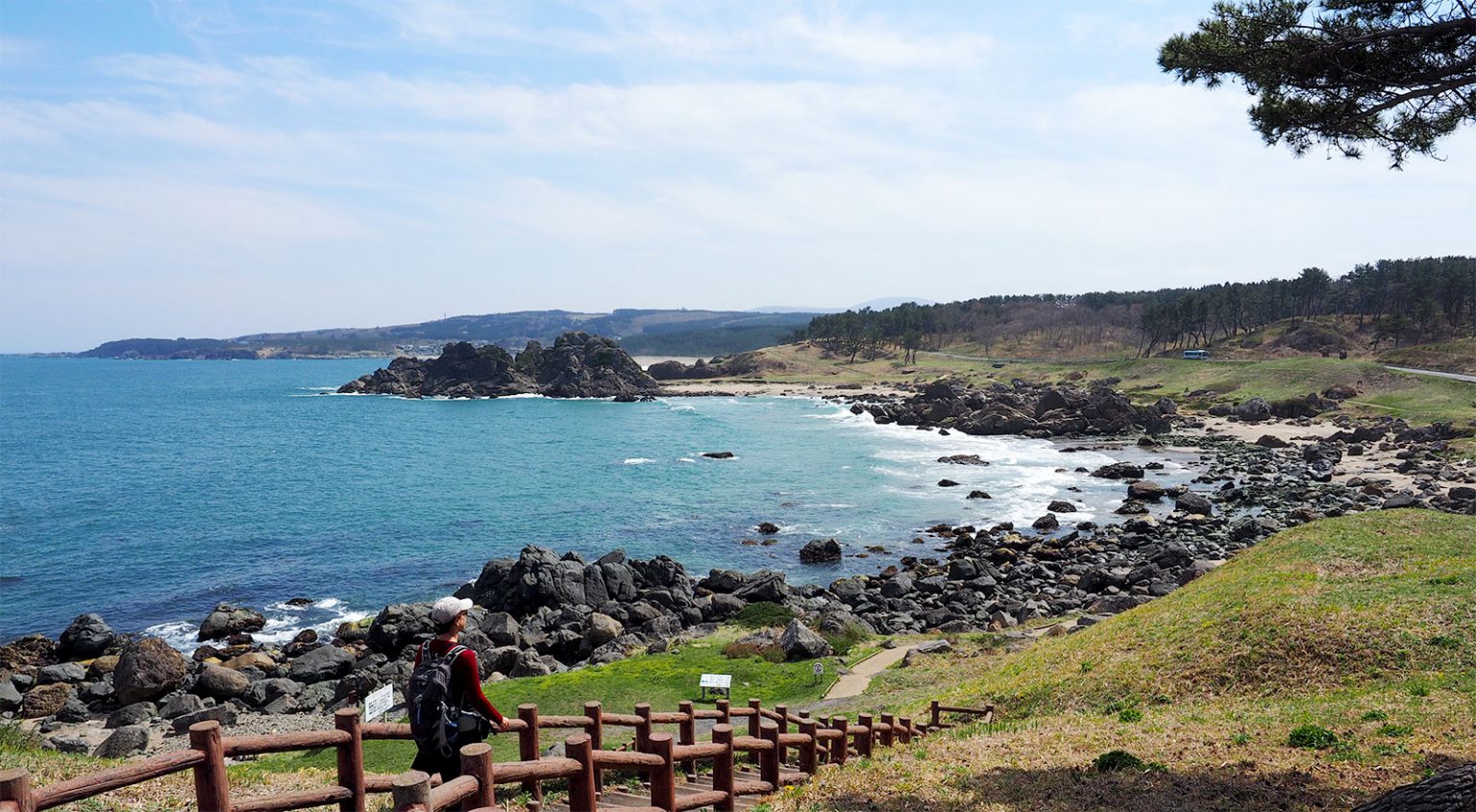
Once its safe to do so, we’d love to join BCCJ member company Walk Japan’s 9-day tour of the Michinoku Coastal Trail which is a long-distance footpath that weaves its way aside the Pacific Ocean for 1,025 kilometres (637 miles), starting in the city of Hachinohe in Aomori Prefecture and ends in Soma, Fukushima Prefecture. The Trail was established as a symbol of recovery and to encourage others to visit and enjoy the wonders of the region. It aims to revive tourism by attracting more visitors to the area. Opened officially in June 2019, Michinoku is the ancient word for the northern Tohoku region.
Coming up
Learn more about Tohoku with the BCCJ, guided by local voices from the region.
- Day 1 – Opening (July 12 2021)
- Day 2 – Miyagi (July 13)
- Day 3 – Iwate (July 14 2021) THIS PAGE!
- Day 4 – Fukushima (July 15 2021)
- Day 5 – Tohoku of Tomorrow, featuring Her Majesty’s Ambassador to Japan, Julia Longbottom (July 16 2021)
We hope you will join our journey throughout Tohoku Week, and do please get in touch with any connections you might have to stories, people, or businesses from the region, for us to include in communications going forward.

